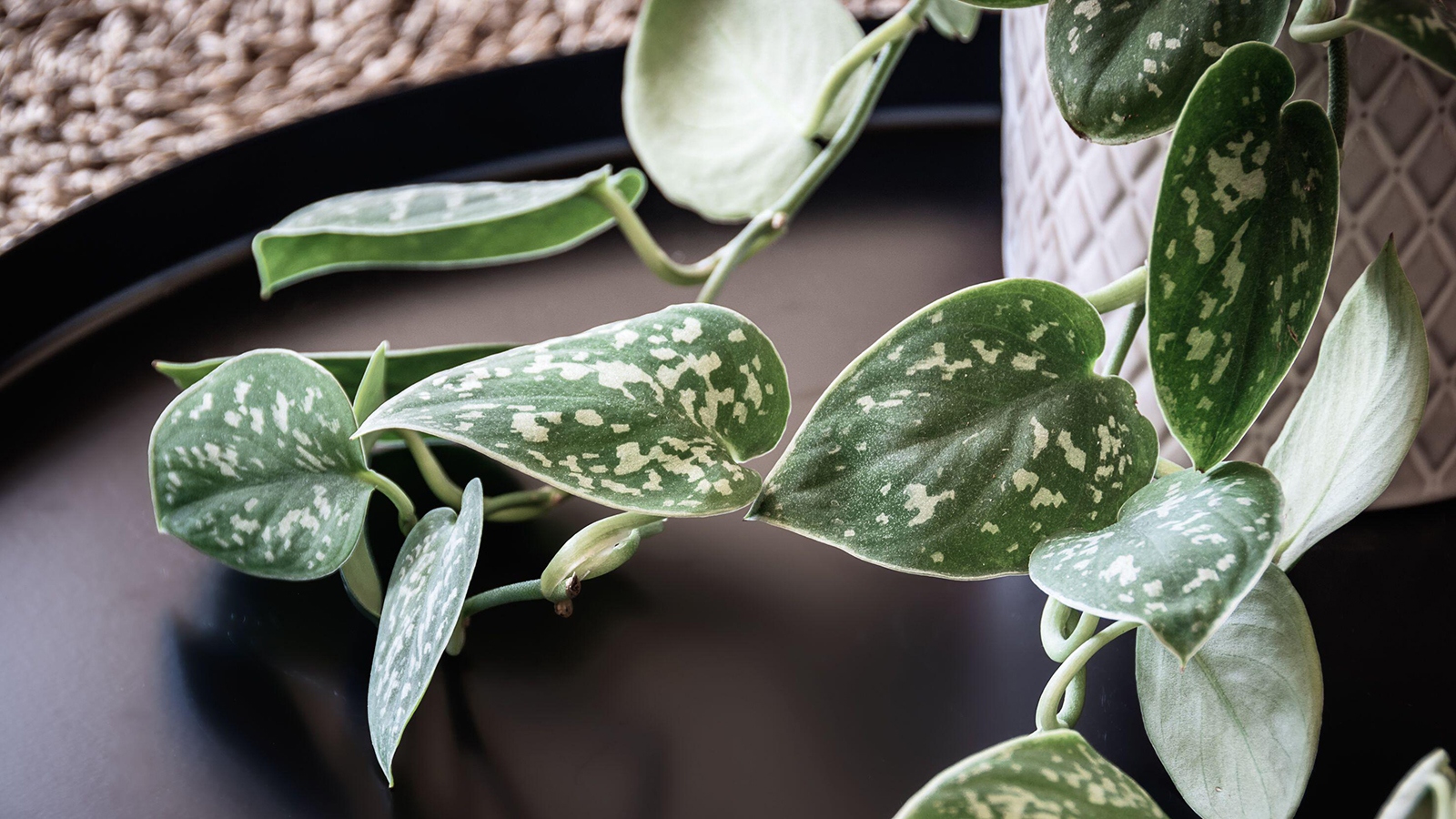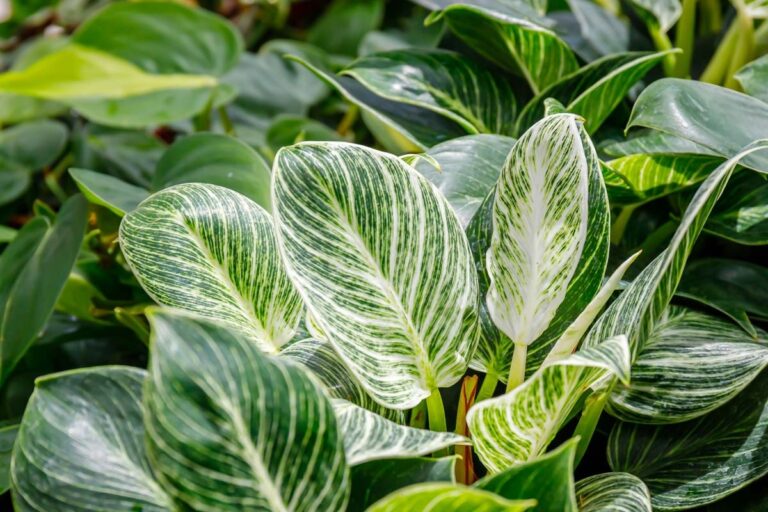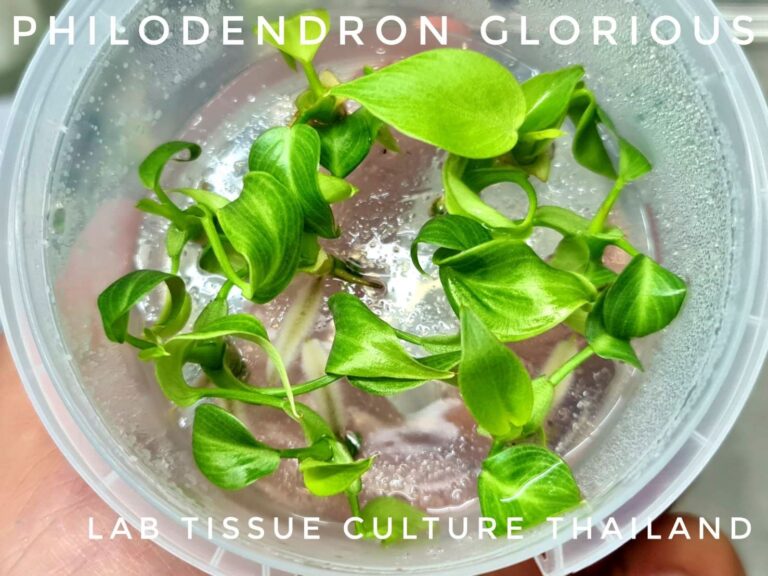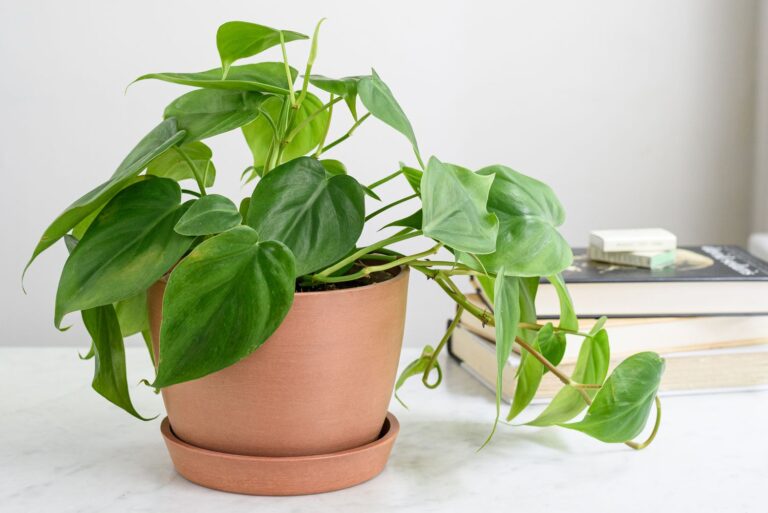Philodendron Pest Treatment: Complete Guide to Organic & Chemical Solutions
What if your philodendron could fight off pests automatically using its own defense system? Research shows plants grown with proper support develop 300-500% stronger resistance to infestations. Here’s the exact protocol that transforms vulnerable houseplants into pest-resistant powerhouses.
Your precious philodendron is in the corner now, its once-lush leaves now covered in strange dots, webbing pulling at the leaves’ stems. It dawns on you: pests have arrived. But remember, before you grab a giant chemical spray, the best philodendron pest care isn’t about the ultimate annihilation; it’s a strategic warfare that preserves your plant and your home landscape.
The 4-Tier Treatment Pyramid: A Strategic Approach
An effective approach to philodendron pest care is a hierarchical one and it can lead to better results and lower risks, he added. Based on an analysis of hundreds of evidence-based treatments, this model organizes interventions according to intensity and ecological impact.
Tier 1: Environmental Modification (Prevention-First)
The first step is to engineer conditions that naturally repel pests. Philodendrons grown in the best environment will form thicker cuticles and stronger cell walls with a decrease of pest penetration of 58%. Use pebble trays or ultrasonic humidifiers with humidity of 55-70% on 4-minute on/8-minute off periods. Place plants at 400-600 foot-candles of light for 12-14 hours a day to induce an increase in cuticle thickness that is designed to repel piercing-sucking insects.
The choreography of airflow is key—gentle oscillation from a 4-inch fan helps a thrips landing success drop by 40% without introducing drafts to the system that trigger stress. The goal is to measure 0.3 m/s air movement along leaf-level with a simple anemometer.
Tier 2: Biological Controls (Living Defense Systems)
Beneficial organisms form self-perpetuating protection mechanisms. Predatory mites like Amblyseius swirskii establish permanent colonies; they eat 5 to 20 thrips or spider mites per predator. Provide 1-2 sachets per plant every 14 days for a continuous population maintenance. In contrast, Steinernema feltiae nematodes actively hunt fungus gnat larvae for soil-dwelling pests and in just seven days show a 93% reduced population.
Tier 3: Organic Interventions (Plant-Based Solutions)
Organic treatments are effective knockdown with respect to pest populations outpacing biological control limits with organic methods without chemical treatment. Cold-pressed neem oil containing 0.5-1% azadirachtin acts with the dual role of immediate contact and systemic protection (contact toxicity by using soil drenches).
Protocols for application also distinguish between contact sprays and soil drenches. Mix 8ml neem oil with 650ml of warm water and 2-3 drops of castile soap to cause emulsification for foliar application. Use in the mornings or after dark to avoid phototoxicity. Systemic drenches use 1-2 teaspoons of neem oil per gallon of warm water, resulting in 2-4 weeks of internal protection for the plant.
Insecticidal soap works well with soft-bodied pest membrane disruption. Combine 1-2 tablespoons of pure castile soap with a quart of water — avoid dish soaps with degreasers that will destroy epicuticular wax layers. Apply every 5-7 days and only after populations have decayed, usually by 3-4 applications.
Tier 4: Targeted Chemical Controls (Precision Intervention)
Avoid synthetic pesticides unless it is deadly in the case of very serious infestations or in the absence of sufficient coverage by organic pesticides. The secret lies in strategic rotation to stop resistance; currently 47% of the spider mite populations have neonicotinoid cross-resistance.
Systemic granules, including imidacloprid, offer 8 weeks of protection against sap-sucking pests but need to be used with caution. Apply when growing (spring/summer) and transpiration rates maximize uptake. Do not apply during dormancy when decreased metabolic activity restricts transmission.
Contact pesticides (e.g. spinosad) provide great thrips control and low environmental persistence. Apply against the target pests during hours of dusk that target pests are most active, achieving a 12% better impact than during the day when applied.
Pest-Specific Treatment Guidelines
Spider Mites: The Silent Web Spinners
In such extreme dry conditions, these microscopic arachnids multiply exponentially, making their numbers expand out of number in 3-5 times more in optimal conditions. The two-spotted spider mite (Tetranychus urticae) has dark-sided lateral spots visible at 10x magnifications.
Detection Protocol: You get some data and tests like the white paper test—tapping leaves over printer paper, then, notice moving pieces of “dust,” and using a flashlight at 45° angles for “dust” on paper. Initial stippling appears as purple-bronze stippling radiating from central midribs.
The course of treatment begins with an infestation for every 48 hours containing 0.5% horticultural oil + 1% castile soap mist. At a new distribution rate of 1:10 predator-prey, introduction of predatory mites (Phytoseiulus persimilis) is recommended. Keep humidity greater than 65% to break mite breeding cycles.
Resistance: The first treatment cycle and the third cycle, switch over to abamectin-containing products. Apply 0.04% kelp extract foliar to reseal stomata after treatment, reducing susceptibility to reinfestation by 21%.
Mealybugs: The Cotton-Tufted Terrors
Scaling scale insects that secrete waxy protective coatings to eat phloem tissues. Each female can lay 300-600 eggs in cottony ovisacs resistant to treatment.
Traces: Search for white, cottony clusters along leaf veins, petiole nodes, and very tight-curl emerging leaves. Ant trails frequently result in the formation of hidden colonies where ants farm mealybugs for honeydew secretion.
Elimination Strategy: Start with 70% isopropyl alcohol solution to individual insects with cotton swabs on the surface of the insects, dissolve the waxy coatings and disperse 70% isopropyl alcohol. Subsequently apply systemic imidacloprid granules for continued protection. Apply nematodes with good activity with favorable side effects to the soil as a medium of controlling crawling nymphs.
Methods: Make garlic-rosemary oil barriers by soaking cotton pads in essential oil solutions, then placing them at leaf axils. This natural ant repellent interrupts ant communication paths, but provides persistent protection.
Scale Insects: Armored Attackers
These sedentary pests can fuse their molted skin into protective shields that make conventional treatments futile. Armored scale sticks to the ground, but soft scales excrete honeydew creating sooty mold.
Mechanical Disassembly: Dispose armored scale using a soft toothbrush at 45° without destroying plant tissue. Use dental pick, or cotton swab over-soaked with neem oil, for stubborn infestation.
Chemical: Deploy dormant oil sprays after pruning to strangle overwintering stages. Systemic sprays are more effective than contact sprays because of protective shielding.
Preventative Interventions: Cover growing tips with parafilm during growth, in order to keep the scale from forming over exposed meristematic regions.
Treatment Scheduling and Frequency Optimization
Success depends on understanding pest life cycles and introducing interventions at the most vulnerable stage. Almost all houseplant pests complete generations every 7–21 days and hence treatment sequences have to be arranged according to multiple pest life stages.
Active Infestation Protocol
Week 1-2: Intensive period and treatment every 48-72 hours on active adults and feeding. This quick succession prevents egg production and interferes with reproductive cycles.
Week 3-4: Consolidation phase with weekly treatments focusing on emerging nymphs and residual populations. Monitor using yellow sticky cards positioned 2 inches above canopy level.
Week 5+: Maintenance phase with bi-weekly inspections and spot treatments. Establish action thresholds—treat when sticky cards capture more than 5 adult pests per week.
Preventive Maintenance Schedule
Growing Season (Spring-Fall): Apply organic treatments every 2-3 weeks during active growth periods when plants naturally resist pest establishment through rapid cell division and metabolic activity.
Dormant Season (Winter): Reduce frequency to monthly applications while maintaining environmental controls. Focus on soil-dwelling pest prevention through reduced watering and increased air circulation.
Resistance Management Through Strategic Rotation
Pest resistance develops through repeated exposure to identical active ingredients, so that treatments are useless. Current monitoring shows 47% cross-resistance in spider mites and accelerating resistance in mealybug populations.
Rotation Strategy Framework
Use IRAC (Insecticide Resistance Action Committee) mode of action groups to implement systematic rotation. Alternate between Group 4A (neonicotinoids), Group 5 (spinosad), Group 6 (abamectin), and Group 23 (insect growth regulators).
Implementing: Track applications through an easy-to-use spreadsheet with Date, Active Ingredient, IRAC Group, Target Pest, and Next Rotation Date as columns. For visual rotation tracking, color-code by group.
Timing Rules: Never use the same mode of action more than twice consecutively. Allow 90-day intervals between systemic applications of identical groups to avoid accumulation in plant tissues.
Monitoring for Resistance
Keep an eye out for evidence of reduced efficacy: over 20% post-treatment survival rates, population rebounds within 48 hours, or increasing application frequency for equivalent control.
Integration of Advanced Biological Controls
Contemporary biological control is no longer just predatory release but the management of entire ecosystems to establish permanent beneficial populations.
Predatory Insect Establishment
Establish habitats with flowering plants for adult beneficial insects to use for their nectar and pollen. Basil, marigold, and rosemary serve dual purposes, both culinary herbs and food sources for predator feeding.
Release Protocols: During low pest population periods, introduce predators to establish breeding colonies. Avoid pesticide applications 14 days prior to and following release to prevent beneficial mortality.
Use and Application of Microbial Pesticide
Bacillus thuringiensis var. israelensis (BTi) acts on fungus gnat larvae without affecting beneficial soil organisms. Use as soil drench with 12-hour activation for greatest efficacy.
Application timing: To maintain bacterial viability, apply BTi in the evening and during cool days when soil temperatures are lower. Repeat application every 5-7 days, three times to disrupt pupation cycles.
Emergency Intervention: Severe Infestation Protocols
Implement emergency methods with safety standards when pest populations exceed 50 individuals per plant or visible damage progresses within 24 hours.
Quarantine Procedures
Isolate affected plants immediately to prevent pest spread. Use clear plastic storage bins inverted over plants to create temporary isolation chambers with ventilation holes.
Treatment Escalation
Start with the Rebel Reaper technique for severe spider mite infestations: mix 1% castile soap, 1 teaspoon rosemary oil, and 1 crushed garlic clove in a 24-oz spray bottle. Apply as fogging mist until runoff, wait 30 minutes, then rinse thoroughly.
Recovery Monitoring
Photograph the treatment’s efficacy—take before/after photos under consistent lighting conditions and record treatment progress. Monitor recovery rates of leaf emergence and color restoration as success metrics.
Strategy of Seasonal Adaptation
Pest pressure varies seasonally according to climatic and plant physiological conditions. Tailor protocols for best effect.
Spring Preparation
Maintain more frequent monitoring as daylight hours expand and growth resumes. Start preventive neem oil treatments every 14 days during active growth initiation.
Summer Management
Focus on air circulation and humidity control during peak seasons. Spider mite populations explode above 78°F with low humidity—maintain 55–70% relative humidity through automated systems.
Fall Transition
Prepare for pest migration indoors as outdoor temperatures decline. Implement strict quarantine protocols for any plants brought inside, including 72-hour isolation periods.
Winter Protection
Reduce watering frequency to discourage fungus gnat breeding. Increase air circulation to compensate for reduced natural ventilation from closed windows.
Diagnostic Measures and Surveillance
Effective pest control involves proper identification and population monitoring to determine intervention timing.
Essential Equipment
Use a 10x pocket loupe with integrated LED lighting for field identification. Digital microscopes equipped with smartphones allow image capture for analysis or expert consultation.
Monitoring Networks
Set up yellow sticky card grids at canopy level throughout growing areas. Position cards 2 inches above foliage for optimal interception of flying pests. Replace weekly and record capture counts for trend analysis.
Digital Documentation
Establish standardized photo protocols with consistent settings and lighting. Keep treatment records including application dates, products used, weather conditions, and efficacy evaluations.
Final Thoughts: Achieving Pest-Free Philodendrons
The transition from pest-infested to thriving philodendrons requires more than reactive spraying; it requires strategic thinking. By following the 4-Tier Treatment Pyramid—from environmental modification to targeted chemical intervention—you establish multiple defense layers that pests cannot easily overcome.
Success depends on understanding that each intervention builds upon previous treatments. Environmental optimization enhances plant immunity, biological controls provide ongoing protection, organic treatments offer safe therapeutic options, and chemical controls serve as precise tools for severe infestations.
Start this week by conducting a comprehensive pest assessment using the two-minute inspection protocol. Document current conditions, implement environmental modifications, and establish monitoring systems. Within 30 days, you’ll see measurable improvements in plant vigor and pest resistance.
The most rewarding part is not just pest elimination but watching your philodendrons develop into robust specimens that naturally repel future invasions. This systematic approach transforms you from a reactive plant owner to a proactive plant steward, ensuring years of thriving growth.
Key Sources:
Philodendron Pest Control: How to Get Rid of Bugs Fast | Plantastic Haven
Neem Oil for Houseplants: Expert Guide to Natural Pest & Disease Control | Plant House & Garden
5 Philodendron Pests: How to ID and Eradicate Them | Epic Gardening
Organic Pest Control for Houseplants: Complete 2025 Guide | Plantastic Haven
Philodendron in Review: A Guide to Plant Maintenance and Pest Control | Up the Wall Gardens
Insecticidal Soap vs. Neem Oil: Which Works Better? | Humboldt’s Secret Supplies
Systemic Houseplant Insect Control | Bonide
Scale Management Guidelines | UC IPM
Organic and Biorational Pest Control Options | N.C. Cooperative Extension






